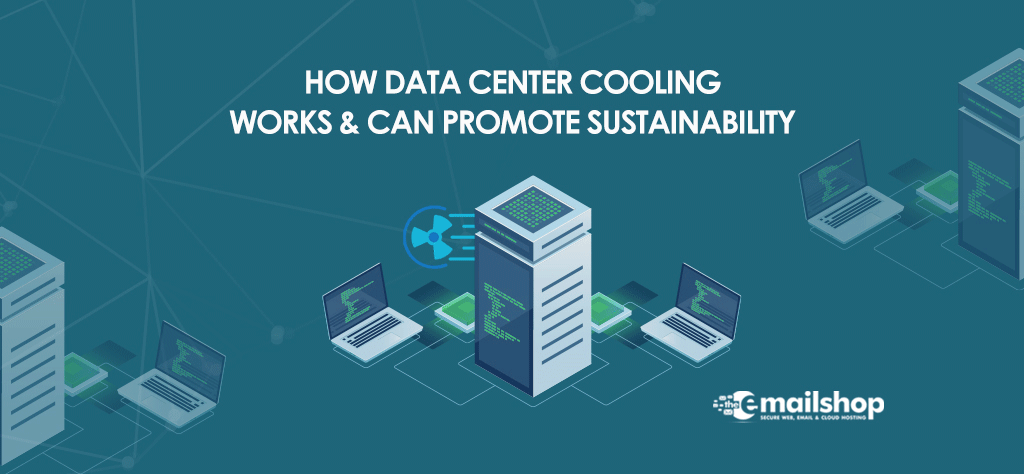Keeping servers at a comfortable temperature is essential, particularly for establishments of an enterprise size. However, doing so has a huge and deleterious effect on Earth. In light of this, let’s take a look at data center cooling in this article and discuss the ways in which businesses may make use of standard procedures and cutting-edge technology to make data center cooling a more environmentally friendly activity.
Every single digital service is dependent on an extensive network of servers and computer resources in order to maintain the degree of performance and availability that is necessary for effective company operations. This will also result in an experience that is consistently better for customers and end users. At any given time, the actions of millions and millions of people all over the world depend on these resources.
- Conducting search queries
- Conducting search queries
- Providing services related to computers
Now take all of those servers into consideration, along with the amount of electricity and heat they produce. Anyone who has ever used a laptop, desktop computer, or gaming platform to play video games is aware of how hot the equipment can become. This issue is enormous at the pinnacle of the commercial world, with server rooms packed to the ceiling with aisle after aisle of computer devices.
What exactly is meant by “data center cooling”?
The process of managing the temperature within data centers in order to limit the amount of heat generated by them is known as “data center cooling.” The failure of a company to properly regulate the heat and ventilation inside a data center may have catastrophic consequences for the company. Not only is there a significant decrease in energy efficiency as a result of the significant amount of resources spent on maintaining a lower temperature, but there is also an immediate increase in the likelihood of servers overheating.
Is data center cooling necessary?
The answer is yes, although maybe not to the same degree as we have traditionally thought. It has long been considered good practice to maintain a temperature of 18 degrees Celsius across an entire room as the space’s ambient temperature.
The example that is most often used is Google, which was able to effectively increase the temperature of its data centers to 26.7 degrees Celsius (80 degrees Fahrenheit). The well-known Google case study will be the subject of more discussion later on.
It’s important for the people in charge of running data centers to know how quickly a server room can get too hot if there isn’t enough liquid cooling equipment.
If the liquid cooling system is not designed correctly, your data center might get the wrong sort of server liquid cooling, which would be a problem. This would result in major overheating, which is a danger that no organization should intentionally put itself in since it might have serious consequences.
The advantages of having cooling in a data center
-
Ensured server uptime
The use of data center cooling solutions that are adequate enables servers to remain up for extended periods of time. In a professional setting where the server needs to be available 99.99% of the time, overheating could be disastrous. If the server fails, it would affect both your company and its clients.
-
Increased productivity inside of the data center
Data does not travel any quicker in server rooms that have a cooler temperature, but it does move considerably faster than if it were trying to travel across a server that had failed. This is because a cooler temperature makes it easier for data to go across a server. Because data centers can quickly develop hot spots, developing new liquid cooling solutions needs to be both effective and simple to do on the fly. This is because developing new liquid cooling solutions on the fly can take some time. This is due to the fact that there is a need for the spontaneous development of fresh strategies for liquid cooling the environment. This suggests that the only techniques for liquid cooling that are rapidly adaptable or systems for air cooling that can quickly modify the way that cold air is used should be utilized for the process of liquid cooling. This allows for a more effective scaling up of a data center, which is a positive development in the big scheme of things.
-
Longer lifespan of your technology
Computers that consistently overheat are more likely to crash and burn before they reach the end of their anticipated lifespan (EOL). Because of this, a data center’s initial investment in expensive cooling equipment starts to pay off quickly.
The development of new technologies for data center cooling makes it possible for a piece of hardware to last longer and for an organization to spend less money on the replacement of infrastructure. Instead of adding to the amount of industrial waste on purpose, businesses need to move toward IT solutions that are better for the environment.
In order to reach the highest possible level of productivity, the liquid cooling system in a contemporary data center is responsible for regulating a number of factors that guide the flow of heat and cooling. These criteria may include, but are not limited to, the following items:
- Temperatures
- The cooling system’s efficiency
- Energy source utilization
- The cooling fluid’s flow properties
Each individual component of the data center cooling system is related to others within the system and has an effect on the system’s overall effectiveness. No matter what kind of configuration you choose for your data center or server room, cooling is essential to achieving a functional and available data center for use in operating your company.
How to cool data centers
The installation of a comprehensive cooling system in a data center may seem to be a challenging operation, but it is an essential step. Every server room needs to have enough and the right kinds of cooling systems to meet the needs of the technology.
Failure to build the required water loop may cause major problems in the high-performance environment in which we live; a lack of consistently cooled air throughout data centers leads to malfunctions. Therefore, everything must be implemented from the start.
There are a number of companies that focus on working with data centers specifically to accurately identify the crucial cooling solutions, install the technology, and preserve the data center’s machinery from the time it is installed until it is retired. These companies have a specialty in working with data centers. An IT staff member who does not have knowledge in the implementation of cooling systems in data centers and who has to locate a solution should give priority to locating one in their neighborhood if they are looking for a solution.
How cooling works: drawing heat out
Temperatures in the room and on the server, hardware need to be kept at just the right level in the data center so that the computing infrastructure may continue to work at its highest level. The heat is effectively drawn away from the data center’s equipment as well as the surroundings around it by the cooling system. In order to bring the temperature of the hardware down, cool air or fluids are used to replace the heat.
You Might Also Like to Read: Advantages of Local Colocation Data center for Your Business
Data center cooling approaches
The cooling of a data center is a delicate balancing act that needs the information technology experts who are responsible for it to take into consideration a variety of parameters. Some of the most common ways to control the air in computer rooms are:
- In a procedure called liquid cooling, water is the medium of choice for bringing down the temperature of the servers. However, new and upcoming technologies like Microsoft’s “boiling water cooling” are being utilized to cool the computers in data centers and drive the technology behind evaporative cooling. Combining liquid cooling with air cooling is often accomplished via the use of a computer room air handler (CRAH).
- Hot air is directed out of the information technology (IT) area using a number of different computer room air conditioner (CRAC) technologies, which are used in air cooling.
- When elevated floor platforms are used, a cold area is created underneath the raised platform. This area enables a CRAH or CRAC to remove heat from the servers by using chilled water coolers and other technologies that deliver cold lanes underneath the computers.
- The functionality of air conditioning is provided by temperature and humidity controls, as well as other technologies, such as an HVAC system that governs the cooling infrastructure.
- The usage of hot and cold aisle containment, which allows hot lanes to flow into cold aisles while passing through the server room, is one method that may be used to exercise control. Within a data center, hot and cold lanes provide support for optimum airflow, the use of a raised floor, and extra cooling technologies such as liquid cooling or HVAC cooling solutions. This is accomplished by separating the hot and cold aisles into separate sections. The data center provides support for these different types of cooling technologies.
For Discount and Offers, Visit our Official Facebook Page









